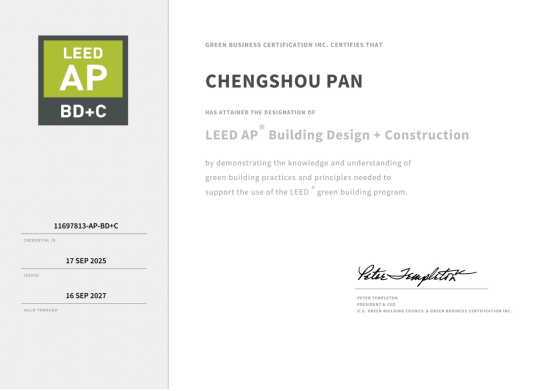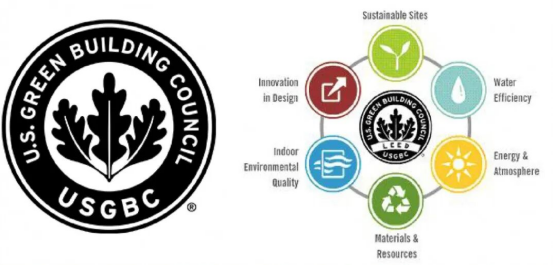Pan Chengshou recently earned certification from the U.S. Green Building Council (USGBC), becoming a LEED AP BD+C (Leadership in Energy and Environmental Design Accredited Professional: Building Design + Construction) credentialed expert.
This certification, recognized as one of the most authoritative professional qualifications in the global green building field, adds an international professional endorsement to the team’s in-depth practice of "green building full lifecycle" initiatives.

On LEED AP BD+C Experts
LEED—short for Leadership in Energy and Environmental Design—was developed and promoted by the U.S. Green Building Council (USGBC) in 1998. Its official Chinese name is “Green Energy and Environmental Design Pioneer Certification.” LEED AP BD+C (Leadership in Energy and Environmental Design Accredited Professional: Building Design + Construction), a professional credential issued by the USGBC, focuses on full lifecycle management of new construction and major renovation projects. Encompassing green strategies across design, construction, and operation, it stands as a core credential for international green building professionals.
Pan Chengshou’s sustainability journey began with interrogating the “hidden costs” embedded in traditional building practices. He has woven the philosophy of full lifecycle sustainability into his firm’s DNA: from blueprint drafting, material selection, and construction management to post-occupancy operation, the team has always prioritized two guiding principles: reducing environmental burden and enhancing long-term use value.

The decision to pursue LEED BD+C stemmed from a need to "systematize our practical experience." For years, our team has worked on green projects, but we needed an international standard to validate our expertise. During his preparation, Pan Chengshou led his team in re-examining past projects—and made two key insights: First, local strategies (such as using regional materials and passive ventilation) align remarkably well with global standards. Second, he deepened his understanding that "sustainability is not about piling up technical solutions, but about accurately balancing environmental and economic considerations." For example, choosing local bricks cuts transportation emissions; optimizing building orientation reduces AC energy use. Sustainability, he realized, is achievable at low cost.
Since earning the certification, Pan’s original aspiration remains unchanged: "Green buildings shouldn’t be a luxury. Using local materials, optimizing spatial layouts—these approaches can reduce costs, boost efficiency, and still achieve sustainability goals."
He added, "The essence of good architecture is to minimize environmental burden, maximize user comfort, and preserve lasting value for the future."